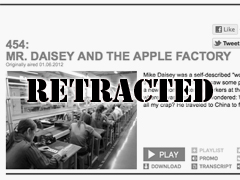I recently received a request for help from a sister company about hiring an SEO contractor for the first time. I thought my advise was pretty useful 🙂 and generic enough to post here.
Thank you for asking about website rank improvement. I have been mostly lucky to have good rankings, but have experience and commentary to help you.In general, I have avoided contract service for help with our website ranking. Whenever I have done so in the past, I have felt it is not a good value. However, as you may not have time or staff with expertise, it may be your best option.
1. Keywords
The listing of keywords on the reports you provided are poor choices for test chambers. On this basis alone, I don’t think you are ready to make a decision about contract.
2. Lack of detail
Besides noting that they will create a blog, there is no indication of how they will do the work. They only provide goals, which is helpful, but if it is for the keyword-phrases in the report, it isn’t too helpful. I would be more interested in targeting increase in traffic to certain product pages and home page, regardless of the terms. Traffic is more important than ranking of a search term. Also, I would concentrate only on Google, and assume that other search engines will have similar reaction to SEO. The report you have shows many search engines that are not popular at all.
3. Tracking
Do you currently have data about current traffic, such as Google Analytics? This tells you what keywords are working for your website and a lot of other detail. This is important information for you to understand, so that you know what your needs are to work with the contractor.
4. AdWords
Instead of their fee, you could spend the same using AdWords, which will guarantee ranking and traffic, plus allow you to target by certain countries. You could contract management of such an account as well, In general, our keywords for Adwords are very firmly established, so any improvement would be in modifying the advertisements.The contractor will tell you that their service is a better investment than Adwords, as the changes are long-term and then additional traffic is free. But I think you need natural listings and Adwords.I like AdWords because true ‘shoppers’ tend to use these ads more frequently, and often may be the first thing they click on, regardless of the regular listings. The first website a ‘shopper’ visits is very important.5. ExpenseTheir contract amount is expensive, in my opinion. There is probably a lot of work for them to do because your site has not been optimized before. Without a good plan (traffic, conversions as goals, certain product pages), I think they are not offering a good value.
I strongly suggest considering Adwords account. Cost will probably be less and results will be very strong. You should do this even if you are working with an SEO contractor.
I’d have fun jumping in and going over their traffic, keywords, and website content. To see someone else charging heftily for the chance to do that hurts a bit, especially when they aren’t offering a modern SEO package.





 I listened to Retraction, I couldn’t stop this feeling of deja vu … that I’ve seen these same mistakes made in B2B.
I listened to Retraction, I couldn’t stop this feeling of deja vu … that I’ve seen these same mistakes made in B2B.
